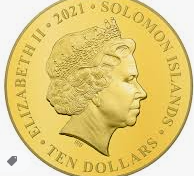|
Part of
the lesson/Time
|
Teacher’s
activity
|
Student’s
activity
|
Assessment
|
Student
task R.S.K
|
Resources
|
|
Beginning of the lesson
Warming-up
2
min.
Team
work
3 min.
Division into groups
«Random sort»
2
min.
|
I. Organization
moment:
The lesson greeting.
Warm up
“Yes, No”, “Stands
up”
1. Tell the students that
answering “Yes” means “Stan up” and answer “No” means sit
down.
2. Do you like
chocolate?
Do you like to run?
Is 2+2=5?
II. Checking up the home
task.
T
asks from pupils about Transports. T uses worksheets in checking
home task.
Teacher distributes cards of the cards
randomly.
First group name called “a”
and second group name called “b”. Choose one card and
divide.
|
“Yes, No, Stand
up” method helps students to understand the new
theme.
Efficiency:By
asking questions students know a lot information about their
friends.
The aim: develop students speaking skills and helps
to break down their shy habits.
Ss look through new words
and divide them into 2 groups.
|
At the organization moment T tries to
award active Ss.
«The THUMBS»
method is
used to evaluate Ss with phrases like:
“Good job!
Well done!”
Descriptors: a
leaners
-review the vocabulary;
-work
in group.
|
T
asking good words, wishes and student should continue to say best
wishes with teacher
support. After wishes to play a game.
Student does the task by matching
pictures.
|
PPT
slides
Pictures
Word
wall
Cards
|
|
«Brainstorming»
method
3 min.
“Predicting”
|
III. Presentation of new
lesson.
Inform learners that they are going to
look a picture and then they must tell what this picture is
about.
a) What do you think about these
pictures?
b) What we can see in these
pictures?
After learners saying teacher says that
this is today’s theme. Then teacher writes on the blackboard date
and theme of the lesson. Teacher introduces with the theme of the
lesson, with learning objectives and assessment criterion. Show the
slide and put brainstorming questions about the pictures as
following.
Can
you guess today’s theme? Today’s theme is
“Weather”.
|
Ss look at the word and try to share
ideas.
After writing T tries to answer all the
questions and appreciate their work saying
“well done”, “Excellent”
In differentiation
part «Discussion» method was used to check up student’s
vocabulary knowledge
Efficiency:
Ss refresh their mind before
starting new theme.
|
Descriptor:
-identify the meaning
-
name activities
-
know vocabulary for the topic.
Praise S who has more cards and could name
the cards.
By the method of THUMBS

|
Student looks at the slides
or cards and say actions with teacher support.
|
Blackboard
PPT
Cards
Pupil’s book
|
|
Edutainment
Listening
task
5 min.
Group work
5 min.
Orally task
|
IV. Education time
Explain new theme.
A Clock
Teacher gives short information
about Weather and explains Ps how to ask day and how tell
the weather.
LEARN TO TALK WEATHER ASK THE DAYS IN
ENGLISH
Work with worksheet
T
gives cards to each student.
Students look at the card and make a
sentence.
Efficiency:
To develop Ps writing skills
Answer the questions
Ask some pairs to act out their
exchanges.
Aim: to practice weather.
Exercise 1
Look at the picture. Answer the
questions.
T explains the activity. Go through the
questions and elicit /explain any unknown vocabulary. Allow the
pupil’s some time to answer the questions. Check their
answers.
Aim:
learn to
express the opinions intelligibly.
Efficiency:
develop
speaking skills and pronounce the new vocabulary
correctly.
|
Learners write grammar rules and pay
attention to the screen and repeat after the teacher and try to
learn by heart of the today’s lesson
Students look and make about present
simples.
Ps give their own examples using the
correct forms of the times.
Differentiation: «Verbal support» method is used to help Ps
use “weather” and “days of the week”.
Refer the pupils to the picture and have a
picture discussion. Elicit what season it is, what is the weather
like, what the children are doing and what they are
wearing.
Answers:
It’s winter.
It’s cold
They’re wearing jackets, helmets and
gloves.
New Year.
|
Descriptor:
-can listen and repeat
- can make a sentences
-can answers the questions
Assessment by the method
of
Stickers

‘excellent’
‘well done’
‘good job’
|
Student listens rules and
use practice. Teacher gives worksheets about be going to and explains how does task.
|
Whiteboard
PPT
Pupil’s
book
Copybook
|
|
Middle of the lesson
Individual work.
5 min.
Vocabulary
Group work
3
min.
|
T asks a question.
Listen and repeat.
What are these words in your language?
V. New words
Teacher introduces new
words:
Snowing
Cloudy
Sunny
Foggy.
Cold.
Hot.
Windy.
Raining.
Use the phrases to write or say
sentences.
Aim: work with group
Efficiency:
To develop Ps critical thinking
skills
After that vocabulary
“a
memory game” to learn the lexical material by heart, by
cleaning out one word each time.
|
Leaners answer the question and complete
sentences.
Learners write new words and pay attention
to the screen and repeat after the teacher and try to learn by
heart the new words of today’s lesson
Students look and think about
meanings.
Writing the words and phrases into
vocabularies with their transcription and definition.
Differentiation: «Verbal support» method is used to help Ps use “o’clock”
instruction” in the sentences.
|
Descriptor:
-can listen and complete
-can spell the word
1
point.
Stickers
‘excellent’
‘well done’
‘good job’
Descriptor:
-can make a sentences
-can use active vocabulary
1
point.
By the method of “COINS”

|
T introduces the new words.
S writes or repeats vocabulary. Matching new words with
pictures.
|
PPT
Dictionary
Worksheets
|
|
Group work
3 min.
Orally task
|
Exercise 2
T
gives 3 minutes to answer the questions. Listen, point and
repeat.
It’s snowing.
It’s cloudy.
It’s sunny.
It’s foggy.
It’s cold.
It’s hot.
It’s windy.
It’s raining.
Students can work in
pair. Answers the
questions.
Aim: pronounce the topic vocabulary words
correctly.
Efficiency: Ps to learn new words before starting
new theme. And practice during the exercise. This method helps Ps
to reflect the spelling of new words.
|
Ps look at the exercise 2 during 3
min. The pupils repeat,
chorally and/or individually. Point to them in random order. Ask
individual pupils to name them. Ask the rest of the class for
verification.
The pupils listen, point to the words and
repeat.
If you wish, play again pausing after each
phrase. The pupils repeat, chorally and/or
individually.
Differentiation: «pair support»
|
Descriptor:
-answer the question
-work with dialogue
By the method of
‘DOLLARS’

|
Student reads the sentences and to find
new words in the text.
|
Pupil’s
book
Copybook
|
|
Refreshment
3 min.
Listening task
|
IV. A refreshment
moment
Method: “musical chairs”.
Play the music and have the players walk
around the perimeter of the chair circle.
When the music stops, everyone must
immediately sit in a chair.
The one person left standing it
out.
Remove another chair and
continue until only one person is left.
|
Ps listen to the teacher instruction. And
play the game following the instruction.
Aim: To develop strategic thinking, listening
to directions and social comfort.
Differentiation: «teacher support»
|
Descriptor:
-can play the music
-can sit chair, while the music
stop.
‘excellent’
‘good job’
‘very well’
‘super’
|
T explains instruction. S
listens and dance.
|
Music
Chairs
|
|
Study spot
5 min.
|
VI. Grammar
Teacher introduces the grammar
–ing.
Pupils’
books closed. Put up the new vocabulary poster on the board. Point
to paint, say and then write: I like painting! Underline the
letters in bold and have the pupils repeat, chorally and/or
individually. Then point to clean, frown, say and then write: I
don’t like cleaning! Underline the letters in bold and have the
pupils repeat, chorally and/or individually. Tell the pupils that
the verb like is usually followed by the -ing form, when we want to
say that we like/don’t like something. Then repeat with the other
verbs. If you wish you can tell the pupils to make sentences with
the other verbs using like/don’t like.
Aim:
develop grammar
knowledge
|
Pupils listen to the teacher carefully and
try to understand the rules.
Efficiency:
Develop their writing skills
Differentiation:
practice method is used to assess Ps write
rules.
|
Descriptor:
-cooperate as a team
-can complete the groups
Assessment by the method of
“COINS”

|
T
explains rules by heart. She say verb –ing form, pupil repeats individually.
|
Whiteboard
Pupils
Book
Poster
|
|
Individual work
3 min
|
VII. Work with
worksheets
T
gives cards to each student.
Students look at the card and make a
sentence.
Aim: to check their knowledge
Efficiency:
To develop Ps writing skills
Differentiation: «Verbal support» method is used to help Ps use have
got.
|
Ps make a sentences and use the
time
Answer the questions
Students write correct form
of sentences
|
Descriptor:
-can use grammar in the make a
sentence
Assessment criteria By the method of
“CANDY”

|
|
Worksheets
|
|
End of the lesson
3 min.
Reflection
Individual work
|
Home task. Write a topic.
VIII. Reflection
Teacher puts app’s cards with a LIKE,
SHARE and COMMENT cards.
Aim: To know how many Ps got the
theme.
Efficiency:
Ps can write the lesson understand to show
how much do they remember.
Differentiation: «Conclusion»
method is used to finish the
lesson.
|
Students write to YOUTUBE paper about
remember from on lesson.
-
What has been learned
-
What remained unclear
-
What is necessary to work on the lesson.
|
Descriptor:
-can write a topic “May day”
Ps evaluate app’s assessment.
Share – I learned a lot today
Like – I like/ I don’t like
Comment – I still have
questions
|
|
Whiteboard
Pupil’s
Book
APP’S cards
|





















